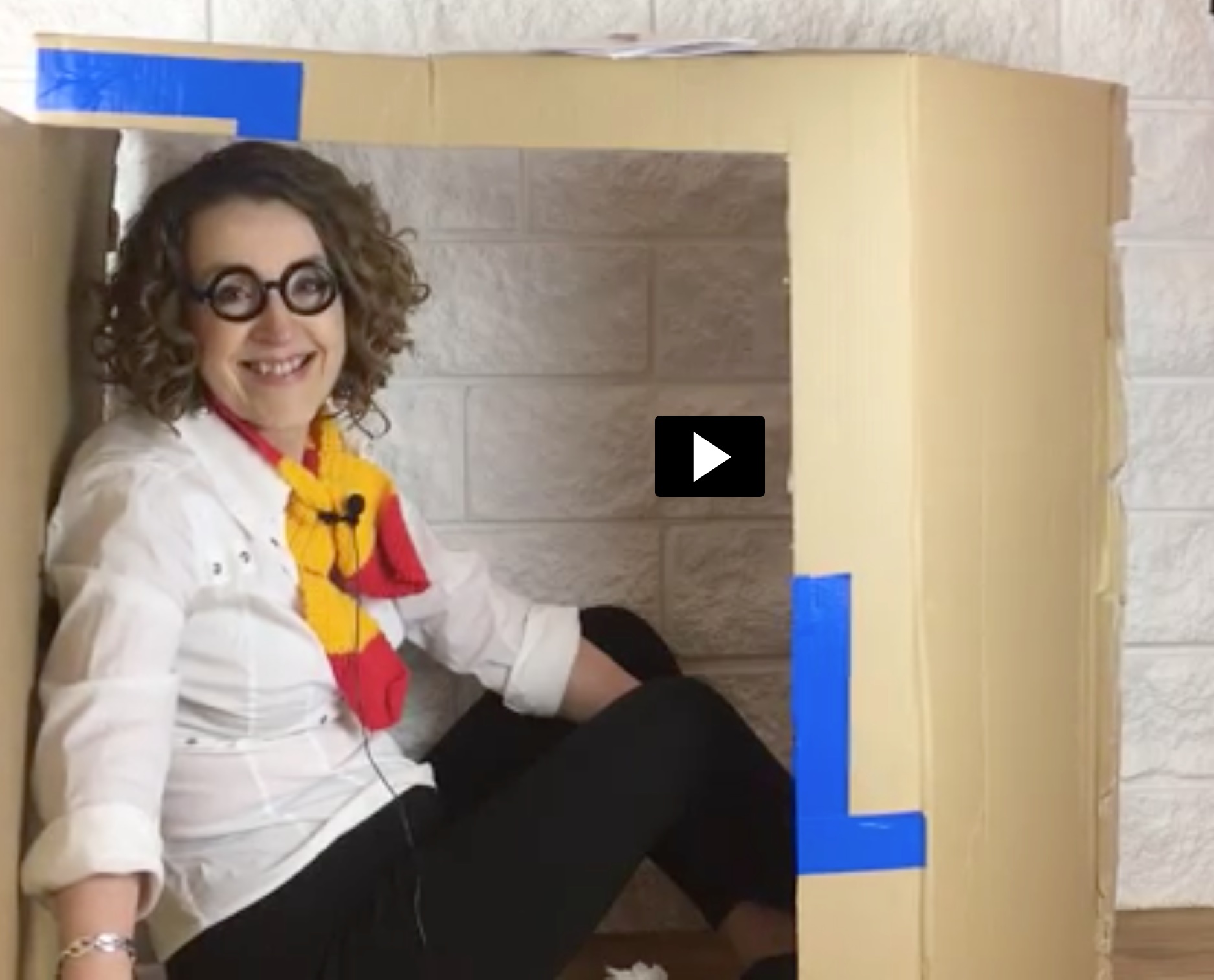
Harry Potter Theme-Based Learning
Children with visual impairments and other disabilities benefit from concrete experience and a multi-sensory approach to literacy and learning.
Children with visual impairments and other disabilities benefit from concrete experience and a multi-sensory approach to literacy and learning. Theme-based learning is a particularly effective way to introduce multi-sensory experiences, using a theme that is of interest and motivating to the students. These videos present a Harry Potter theme, using materials and activities described in the popular series. In addition to helping children who are blind or visually impaired to develop a deeper understanding of the concepts in the books, this is also a wonderful way to include children with learning differences in inclusive activities with a theme that is popular with their classmates.
Video Transcript
The Importance of Multi-Sensory Experience (Video 1)
Welcome to a Harry Potter-inspired workshop. It’s really important that children who need to learn differently have the real experience, and have the cupboard-ness of the cupboard in Harry Potter, and the letter-ness of letters. They need to experience it in a multi-sensory way, so that they can have as much pleasure and enjoyment from Harry Potter– and any other story– as any other child. Join me now, as I show you some more lovely Harry Potter-inspired resources by Positive Eye.
Developing Language, Concept, and Literacy Skills Through Theme-Based Learning (Video 2)
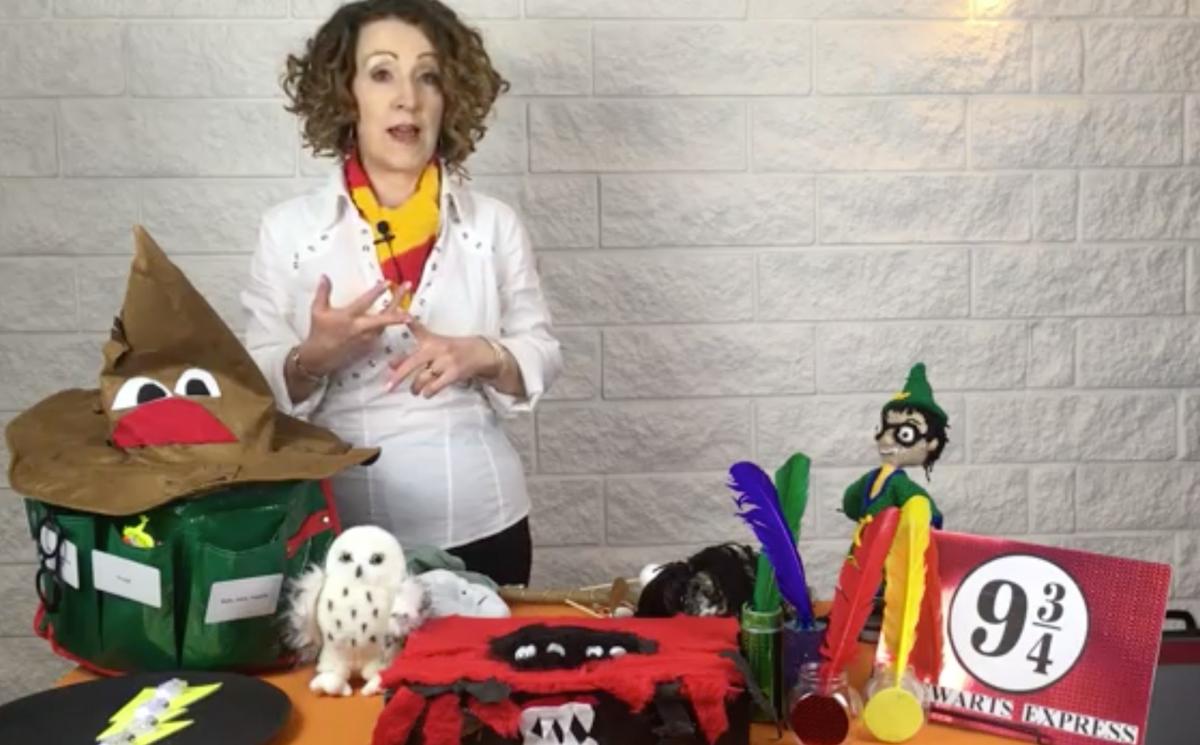 It’s really important that children who need to learn differently have the real experience as much as possible. They need the concrete, multi-sensory approach to learning. And this is what I am offering with my Harry Potter-inspired resources.
It’s really important that children who need to learn differently have the real experience as much as possible. They need the concrete, multi-sensory approach to learning. And this is what I am offering with my Harry Potter-inspired resources.
So, I’ve brought along a few to share with you today. They are just ideas and they are just inspired by the story. And you can do this with any story– make resources, model-making. Model-making is really important, role play is really important. Developing language skills and the concepts that go with at the same time.
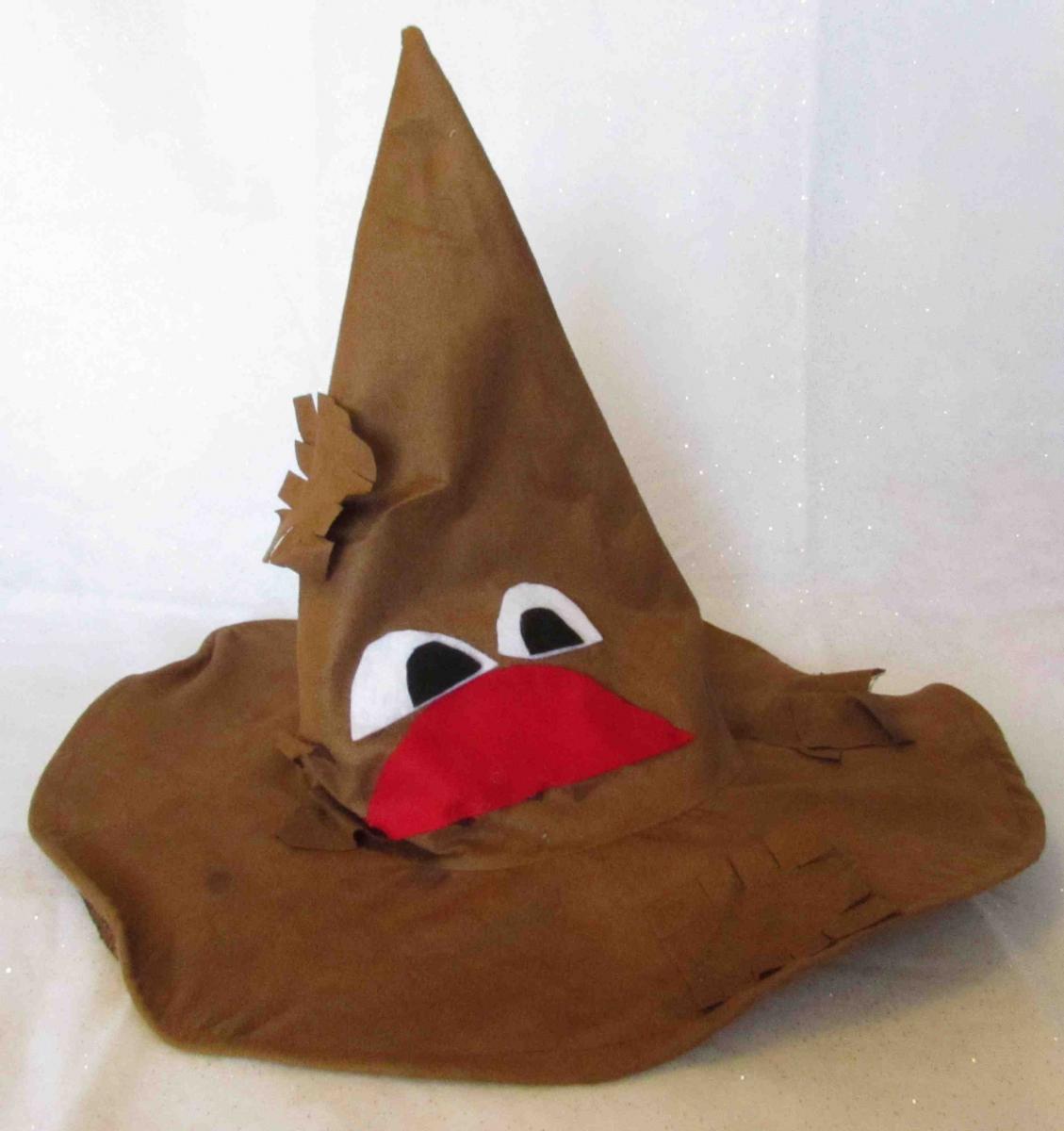 So, this is my sorting hat. I bought the hat. And then I’ve added on, in felt, the eyes and the mouth. But the children can feel the eyes and feel the mouth. They can try on the sorting hat and they can imagine how Harry might have felt when he put on the sorting hat. Really important for them to experience the feeling. Does it feel heavy? Does it feel light?
So, this is my sorting hat. I bought the hat. And then I’ve added on, in felt, the eyes and the mouth. But the children can feel the eyes and feel the mouth. They can try on the sorting hat and they can imagine how Harry might have felt when he put on the sorting hat. Really important for them to experience the feeling. Does it feel heavy? Does it feel light?
Matching Symbols and Initial Letter Sounds
And then down here I’ve made a very simplified version of the house emblems for the children on a nice, high-contrast background. High-contrast backgrounds are really good for children who find it difficult with visual clutter. You know, just very simply positioned.
And then I’ve made, matching symbols and emblems for them to match to the pictures. They can read the initial letter sounds, they can read the whole word, they can match the word to the right symbol. There’s lots of ways of developing that activity further. Yet they’re doing the literary experience at the same time.
They can make this board. That’s even better. Making is part of literacy. It is a really important part of literacy development.
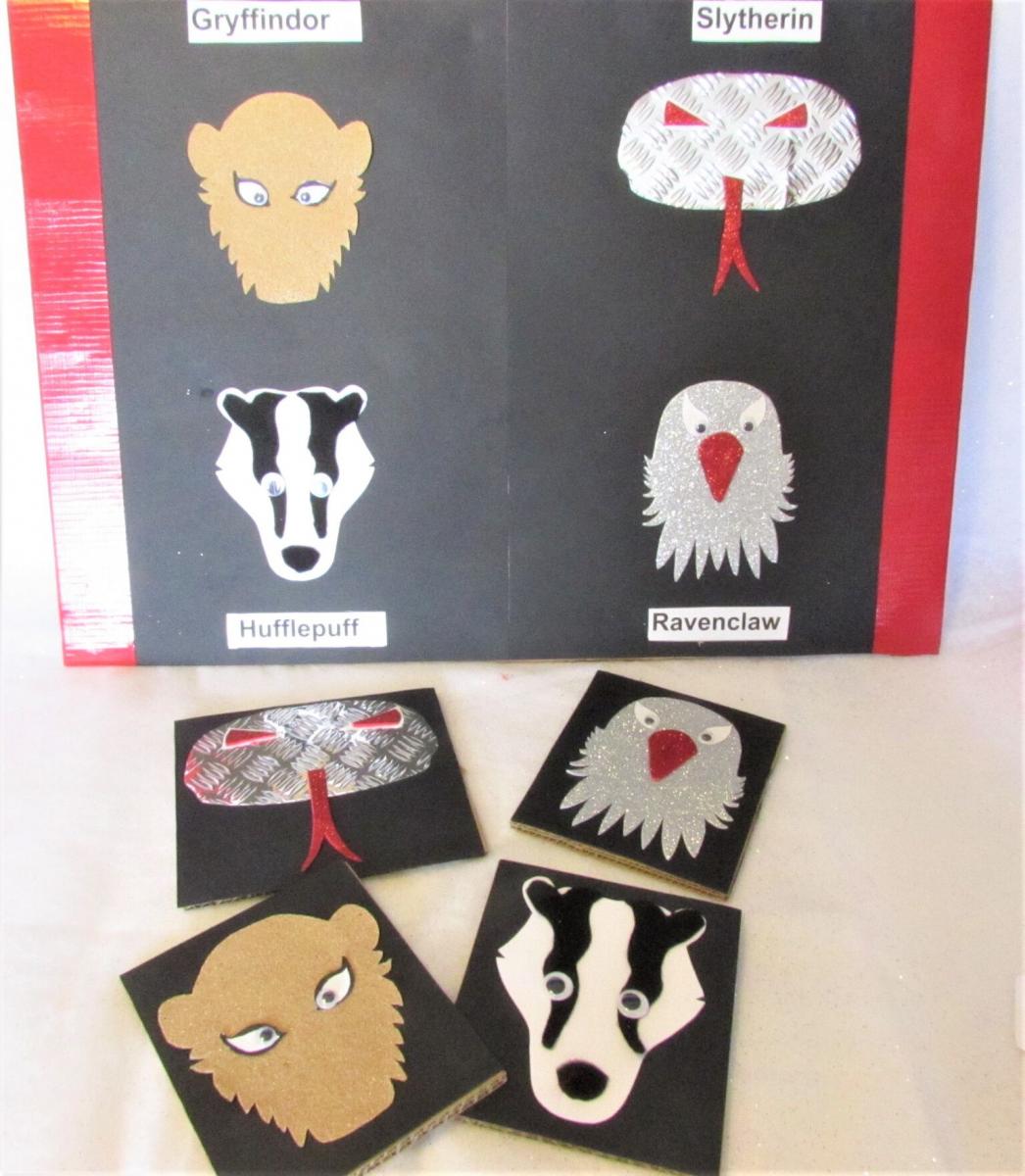
Story Buckets
So, under my sorting hat I’ve got a lovely story bucket. I make story buckets at Positive Eye. I think it’s a fantastic way of keeping all the concrete objects together, related to the story. The bucket is simply a pound and the bucket apron is 7 pounds 70 from Amazon. But I love it because it’s got pockets in. And so the children can explore what’s in the pockets. And you can put in the pockets the real objects in the story.
And on the front of each pocket there’s a credit card. And on each credit cards it’s a label. You can add on braille, you can add on an audio label. And they just Velcro onto the pocket. So, the child can match the initial letter sound to the object in the pocket. They can match the whole word to the object in the pocket.
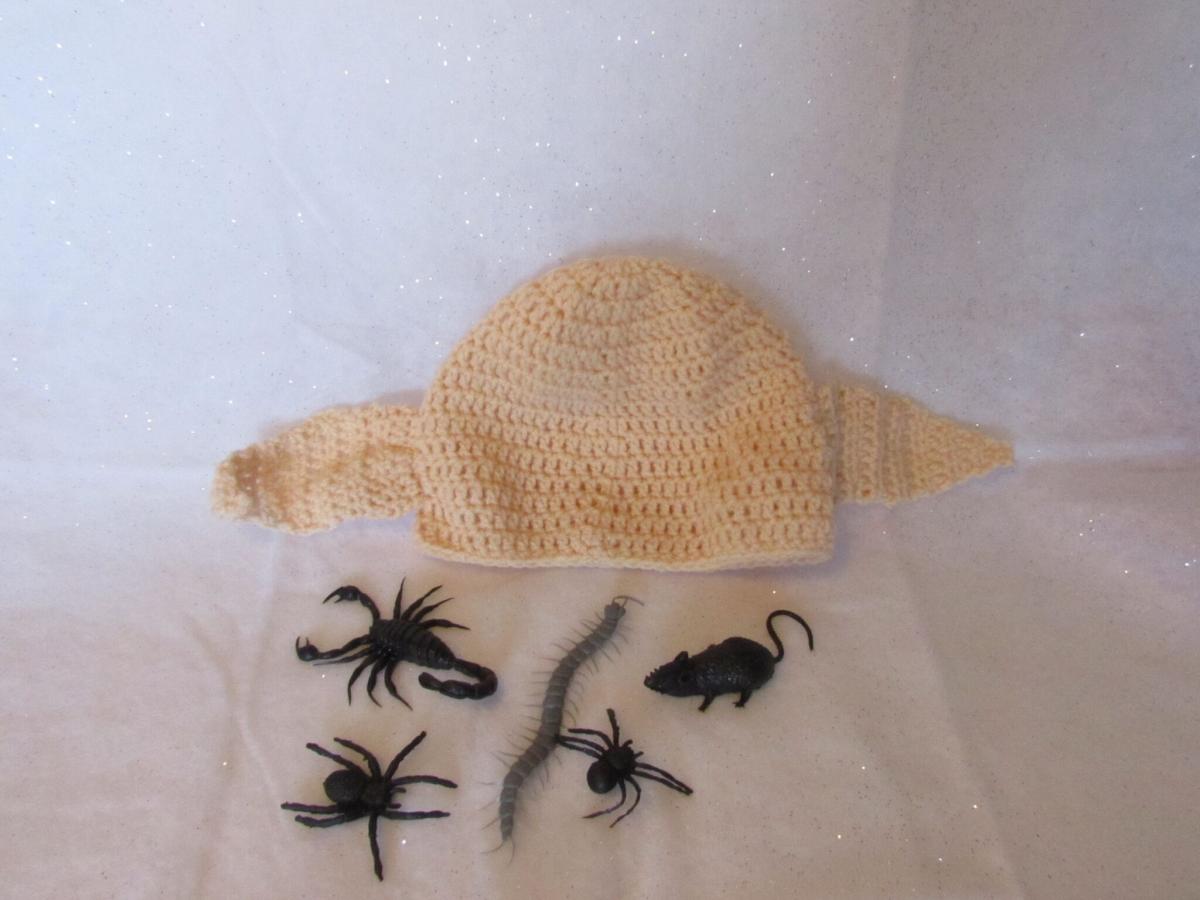 You can put your big things in the big part of the bucket, the smaller things in the smaller pockets, so going around the bucket apron, we’ve got Dobby’s hat. Somebody sits and crochets Dobby’s hat, which I thought was quite interesting. So the children can feel what it might feel like to be Dobby with really big ears that stick right out, and how that might feel. That’s a little bit weird actually.
You can put your big things in the big part of the bucket, the smaller things in the smaller pockets, so going around the bucket apron, we’ve got Dobby’s hat. Somebody sits and crochets Dobby’s hat, which I thought was quite interesting. So the children can feel what it might feel like to be Dobby with really big ears that stick right out, and how that might feel. That’s a little bit weird actually.
So, an then we can pop it back in the pocket when we finish playing with it. We can feel Harry Potter’s scarf and wear it, and put on his glasses. And these little glasses, I bought 12 from Amazon, in a little pack. They’re little party glasses, really, for party bags. But perfect, absolutely perfect, for this story bucket.
And then in here I’ve got jumping frogs and each one’s got a letter from Harry Potter’s name on it. So they can flick their frogs into a pot in order of how to spell Harry Potter.
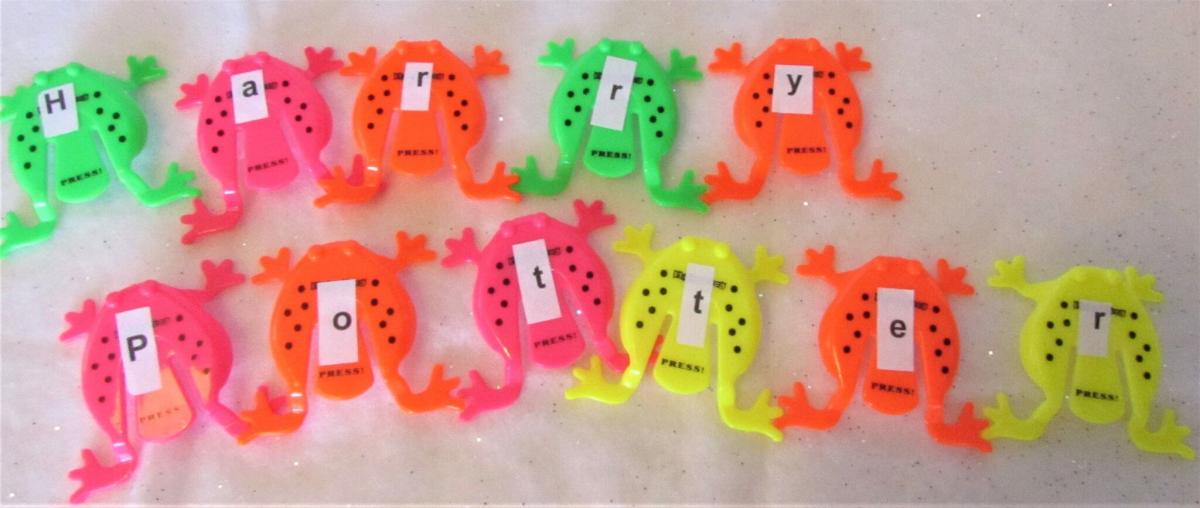
Creepy crawlies in this one and scrolls with Harry Potter writing in the back here. And then finally, we’ve got Hagrid’s beard. I’ve just used a piece of elastic and I’ve stapled wool onto the elastic. So, that it just hooks over your ears. Then you put on that, and then you get hold of Hagrid’s wig as well, which is just here. And you can become Hagrid. So that goes on your head like that and you can begin to feel how Hagrid might have felt with his long hair. Just made with black wool and a few pan scrubs as well.
So, they can think about what might have been in Hagrid’s hair. And was it clean hair or dirty hair. And what will happen if you’ve got dirty hair. So, there’s lots of extended learning that you can do out of that. I’ve just managed to knock my own hair into the wig of Hagrid hair. I don’t think you can tell one from the other to be honest with you.
But back to the table. We’ve got his owl here. And we’ve also got the lightning bolt, Harry’s lightning bolt. I’ve changed it a bit. I’ve made it much bigger. I’ve added on some lights, so that children who are visually impaired can be attracted in and use really good, positive looking. It’s always good to put something on the black background because it makes it stand out and more attractive. And it helps them to attend to what they’re looking at.
So the finger lights are just Velcro-ed on. Ink pots with lovely, bright colored quills. They can match the colors. They can find the smallest pot, the biggest pot. How much will go in the big pot? How much ink will go in that little pot?
We’ve got the sign, nine and 3/4. We’ve got Harry Potter dressed up. This is Marvin, from another story that I do. He loves to be part of the action.
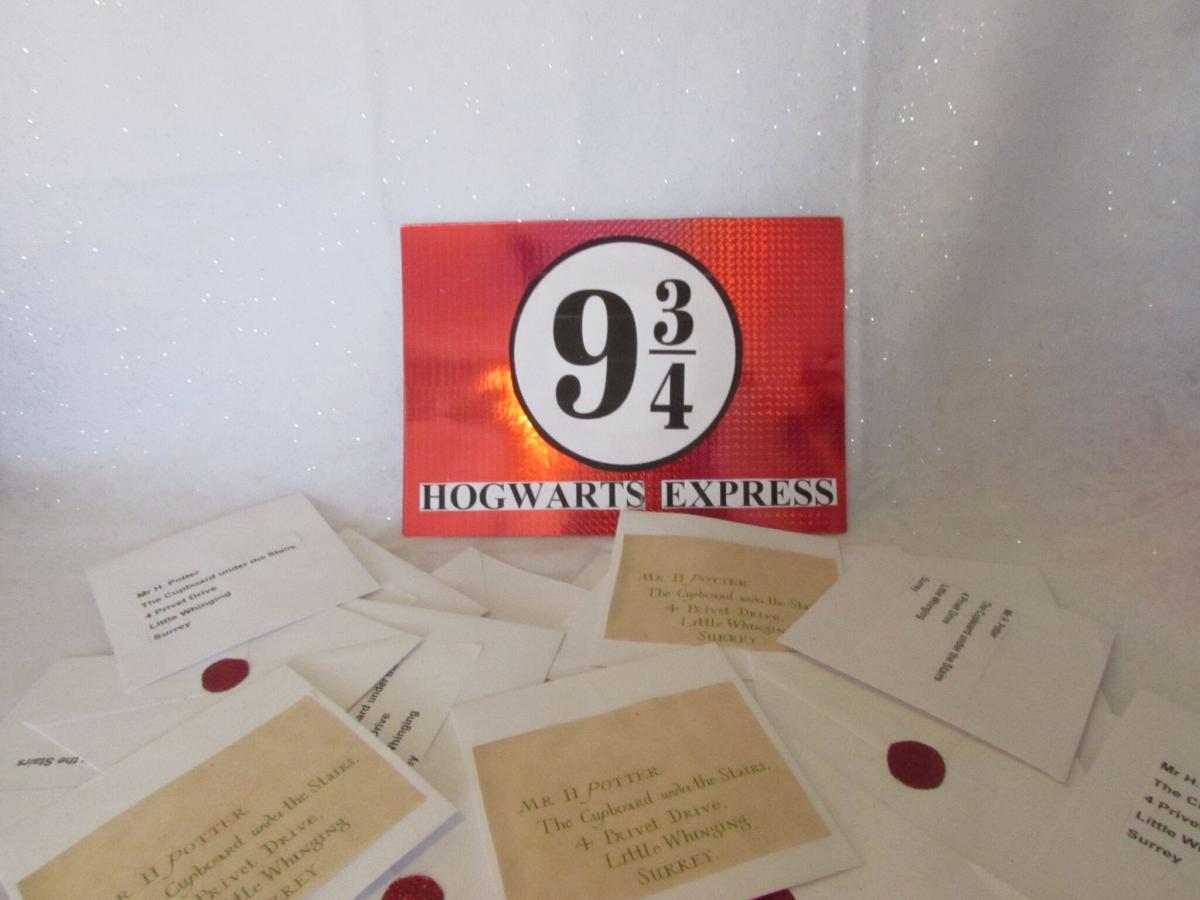
And then here we’ve got the Nimbus 2000. And I’ve just added some of those lovely tree lights. This is the cheapest broomstick I could buy. And I’ve just added some lights. How lovely is that? We can play. We can play at taking part in the games with Harry.
And then here we’ve got Quirrell, who’s got Voldemort on the back. And this is just a very cheap mask from the store and just a scarf on the elastic. But how good does that look? So we can play at what that might feel like to have a face on the back of your head. Well, that’s a very abstract concept, isn’t it? Unless we actually practice that and make the mask to wear.
And then finally, we’ve got some little snitches. And all I’ve done is use a polystyrene ball. I bought some little gold feathers, again from Amazon, and I just put them on a stick to make them easy to hold, for the children to use.
The Snitch-ness of Snitches and the Feather-ness of Feathers
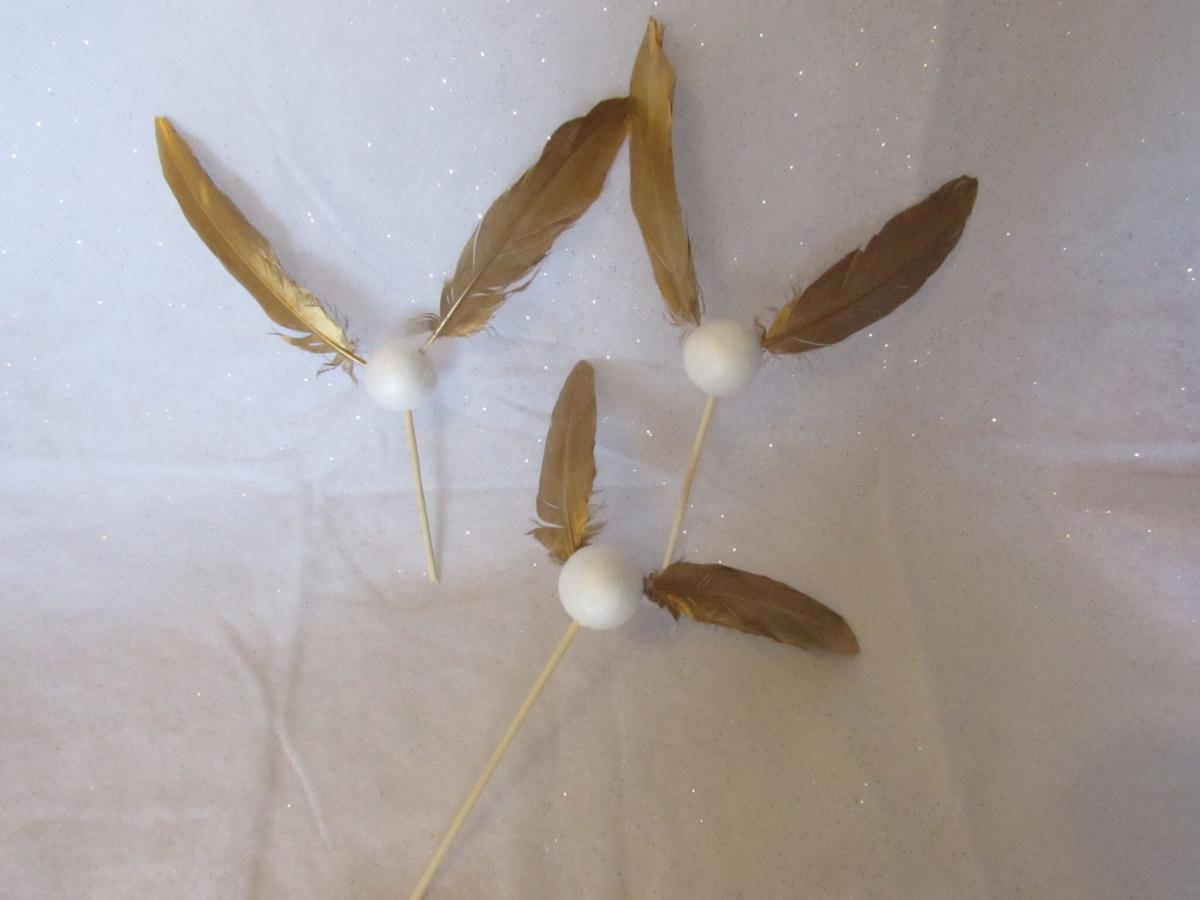 So, we’ve got the snitch-ness of snitches and the feather-ness of feathers. So, we’re doing so much lovely learning through this. And so, all those abstract concepts that we find in stories like Harry Potter become more meaningful if we have the real object to hold.
So, we’ve got the snitch-ness of snitches and the feather-ness of feathers. So, we’re doing so much lovely learning through this. And so, all those abstract concepts that we find in stories like Harry Potter become more meaningful if we have the real object to hold.
And finally, and back to the bucket, we’ve got lots of different bottles of poison for making spells with. Big bottles and little bottles, and different shaped bottles. So we’re doing some nice shape work as well. Which is the heaviest? And which is the lightest?
And then here, finally, I’ve adapted it slightly. Because red is always quite a good color for children who are visually impaired, particularly children with cerebral visual impairment. They’re often quite attracted by red. So, I’ve changed the color slightly, covered it in fur, added on eyes, and I’ve made the Monster Book of Monsters. And in my book, the Monster Book of Monsters, I’ve got lots of bugs and nasty creepy crawlies. So, that would feel very monstrous to me. And I’ve just stapled little plastic bats to the outside of the box to just give it more of a leery feeling.
So, it’s important. It’s not necessarily to make everything I’m showing you. It’s just taking a few elements and creating some nice objects for the children to hold and experience while you’re telling them the story. So, it’s all about making sure that you do the Hagrid-ness of Hagrid, and the snitch-ness of snitches, and the poison-ness of the poisons bottle of poison that Harry Potter is going to use in his spells.
For More Ideas (Video 3)
I hope you’ve enjoyed my Harry Potter-inspired workshop. If you would like any more ideas, if you visit positiveeye.co.uk/resources, there’s lots of ideas on that page, including a download called Creative Story Bucket Ideas, where you’ll find 21 more ideas based on different stories that were produced by Services for Children with Visual Impairment in the north of England. And it’s a fabulous resource, and it will inspire you with lots more ideas. So have fun and enjoy making your resources, folks. Bye-bye for now.
